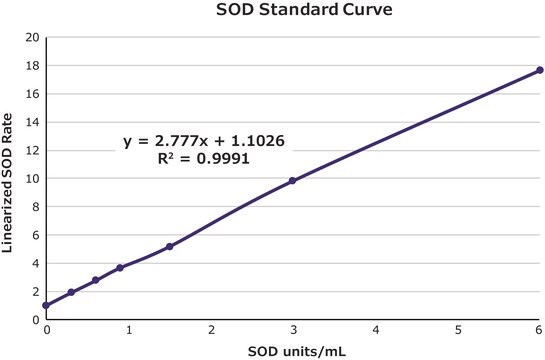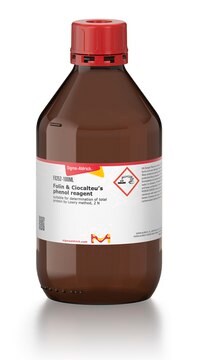MAK334
Antioxidant Assay Kit
sufficient for 100 colorimetric tests
Sinónimos:
Oxidative Stress Assay Kit, Total Antioxidant Capacity Assay Kit
About This Item
Productos recomendados
uso
sufficient for 100 colorimetric tests
entrada
biological sample(s)
plasma
food(s)
serum
urine
beverage(s)
saliva
aplicaciones
cosmetics
food and beverages
pharmaceutical
método de detección
colorimetric
enfermedades relevantes
Alzheimer′s disease; Parkinson′s disease; diabetes; neurological disorders
Categorías relacionadas
Descripción general
Aplicación
- Cancer Research
- Diabetes Research
- Drug Discovery
- Neurodegenerative Disease Research
- Oxidative Stress Research
Características y beneficios
Simplified Process: Experience a streamlined process with the addition of only a single working reagent and a 10 minute room temperature reaction, reducing complexity and saving valuable time and effort.
Compatibility with High-Throughput Systems: Easily incorporate our kit into high-throughput handling systems, ensuring smooth and accurate processing, enhancing efficiency in your laboratory workflow.
Idoneidad
Principio
Otras notas
Código de clase de almacenamiento
10 - Combustible liquids
Punto de inflamabilidad (°F)
188.6 °F
Punto de inflamabilidad (°C)
87 °C
Elija entre una de las versiones más recientes:
Certificados de análisis (COA)
¿No ve la versión correcta?
Si necesita una versión concreta, puede buscar un certificado específico por el número de lote.
¿Ya tiene este producto?
Encuentre la documentación para los productos que ha comprado recientemente en la Biblioteca de documentos.
Los clientes también vieron
Nuestro equipo de científicos tiene experiencia en todas las áreas de investigación: Ciencias de la vida, Ciencia de los materiales, Síntesis química, Cromatografía, Analítica y muchas otras.
Póngase en contacto con el Servicio técnico




